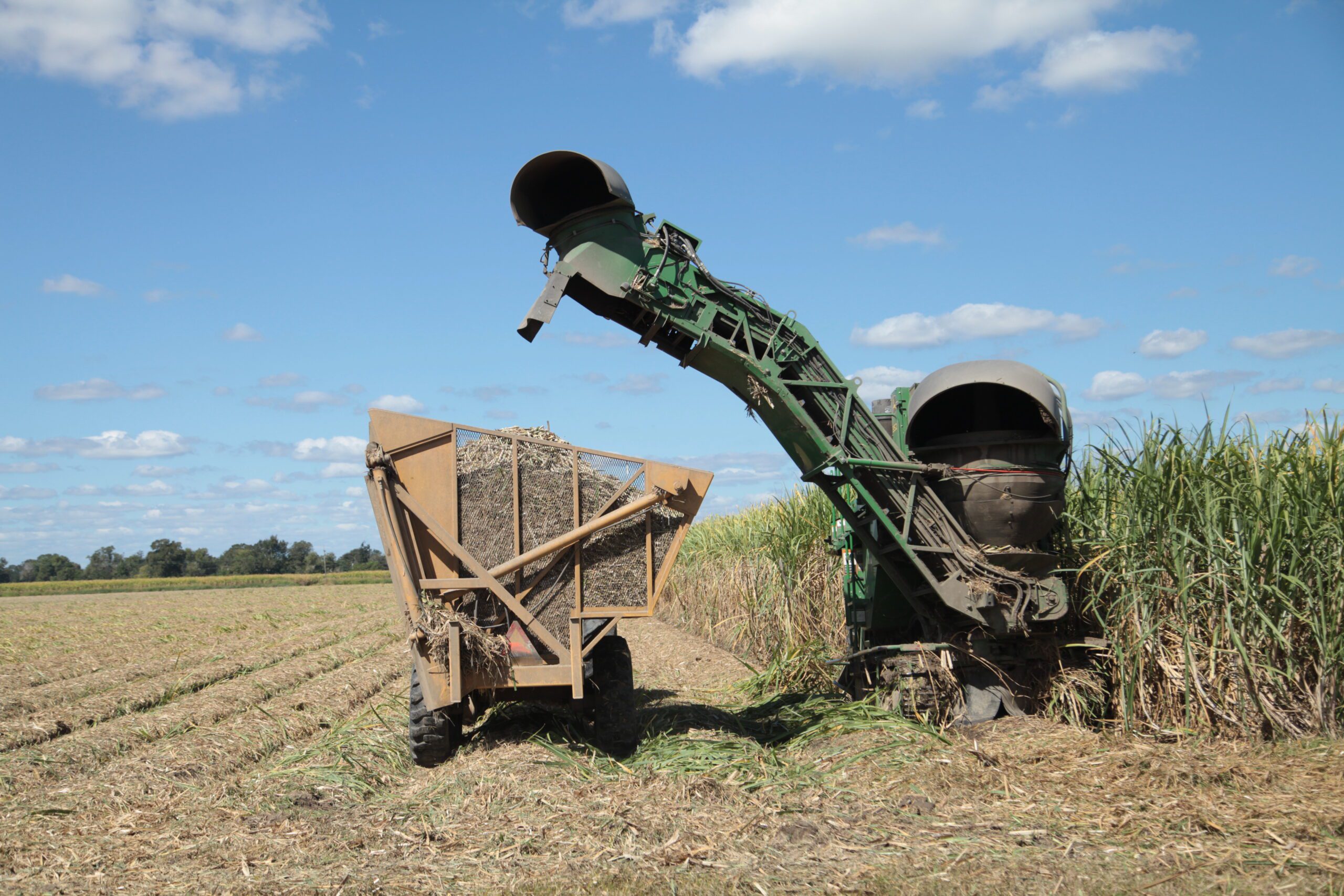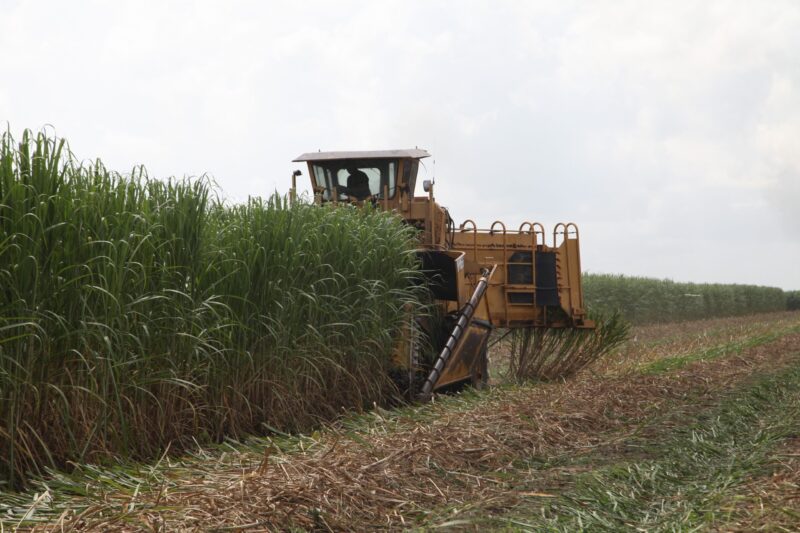As fall approaches, Americans will soon be cooking and baking for the holiday season and farmers will gear up to harvest the crops that will put food on tables across the country. It is an especially busy time for sugarcane growers because the fall harvest is also their planting season.
About half of the sugar produced in the United States comes from sugarcane, which is grown on family farms in Texas, Louisiana, and Florida. Unlike traditional row crops planted in the spring and harvested in the fall, sugarcane must grow for at least one year before it is ready to harvest. This unique crop also requires unique equipment, so let’s take a look at the machines sugarcane farmers use to get real sugar from their fields to your shelf.
Sugarcane is a perennial crop of tropical grass that flourishes in hot, wet climates. It is vegetatively propagated which means that farmers plant whole stalks of cane rather than a true seed. As many as six harvests can be made from a single planting, so farmers typically plant only about 20 percent of their total acreage each year in August and September. After planting, they immediately start harvesting sugarcane from September through January.
The process begins by getting the ground ready because sugarcane stalks must be planted in well worked fields. Farmers use a three or five row cultivator, depending on the model, to do tillage. The cultivator is pulled by a tractor and tills the soil by sliding under the surface of the ground at a depth of three to six inches to create rows in the field. These rows are about six feet wide.
After the field is “rowed up,” it’s time to plant the cane stalks! One of the first sugarcane planting machines was invented by Leonard Julien, Sr., of Modest, Louisiana in 1965. One of Julien’s machines could plant more cane in one day than twelve men and revolutionized the American sugarcane industry.
Now, almost 60 years later, sugarcane planters have evolved and are pulled by tractors.
First, an implement is pulled through the field to open a furrow in the rows. The planters are loaded with seed and as they are pulled through the field, they drop seedcane stalks into the open rows. The planters can hold six to eight tons of seedcane stalks and the machine plants roughly 4,000 to 10,000 stalks per acre at a rate of about two acres per hour. After the stalks are dropped into the ground, another implement is pulled over the field to cover the stalks with soil. Sealing rollers are then pulled over the rows to ensure there are no air pockets inside.
By the following September, the fully grown sugarcane plants are up to ten feet tall. Farmers use a self-propelled mechanical machine called a sugarcane harvester to harvest the cane. The harvester was originally developed in the 1920s, has one to two rows depending on the model, and is similar in function and design to the combine harvester.
Southern Louisiana receives an average of 68 inches of rainfall every year, which creates tough conditions, but the sugarcane harvest takes place rain or shine. The often-muddy cane fields require harvesters to be mounted on tracks instead of wheels which can get stuck in the muck.

 The harvester, which can cut up to 60 tons per hour, stands up the cane as it moves through the rows and cuts it a few inches above the ground. Once the cane is cut, rotating arms strip off the leaves and undergrowth and move the stalks through cutters that chop them into smaller pieces known as “billets.” A conveyer arm then transfers the billets to a tractor pulling a large hopper-style trailer. The leaves and undergrowth are ejected back onto the field, where they act as a fertilizer.
The harvester, which can cut up to 60 tons per hour, stands up the cane as it moves through the rows and cuts it a few inches above the ground. Once the cane is cut, rotating arms strip off the leaves and undergrowth and move the stalks through cutters that chop them into smaller pieces known as “billets.” A conveyer arm then transfers the billets to a tractor pulling a large hopper-style trailer. The leaves and undergrowth are ejected back onto the field, where they act as a fertilizer.
The cane billets are immediately loaded in semi-trailers for transport to a nearby raw sugar mill. Once cut, the sugar content of the billets falls rapidly, so they must be transported to the mill immediately. At the sugar mill, the cane stalks are washed and cut into shreds and huge rollers press sugarcane juice out of the shredded stalks. The juice is clarified, concentrated, and crystalized to produce golden raw sugar, but this raw sugar is not yet food grade until it is transported to a refinery to finish the purification process. The finished product is packaged and shipped to grocery stores.
Growing sugar is a family business. The sugar family includes not only the multigenerational farmers who plant, harvest and care for the sugarcane, but also the truck drivers who move the crops from the fields; the employees who work in the mills, processing plants and refineries that extract, purify and package sugar; and all the people who work to get sugar from the packaging facilities to your table.
The sugar family works year-round to provide your family with the highest quality product possible for all your special moments, and that’s something to celebrate!





Get Social with #MoreToSugar